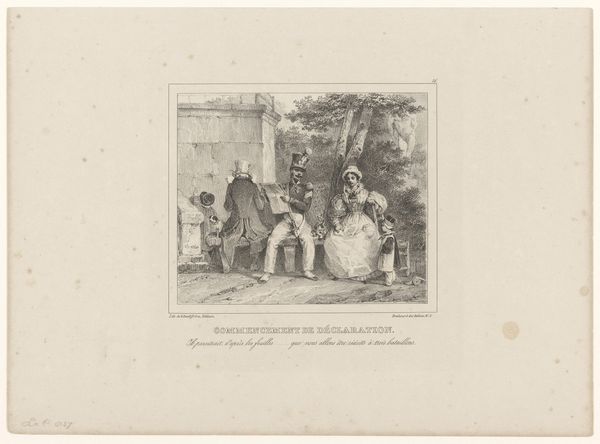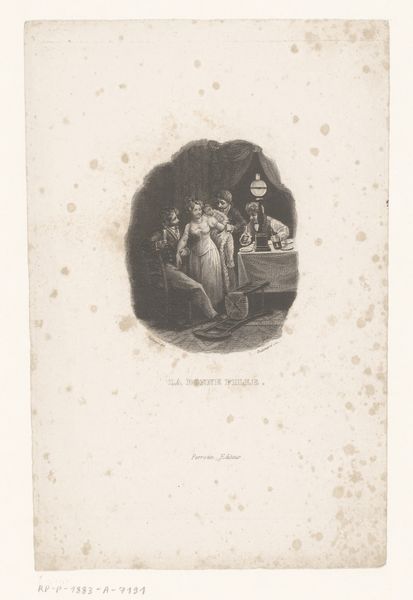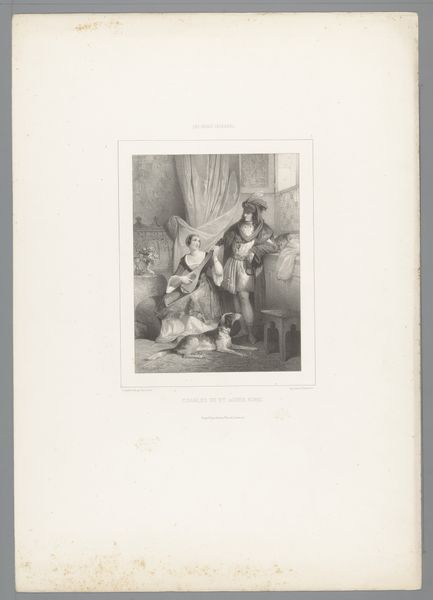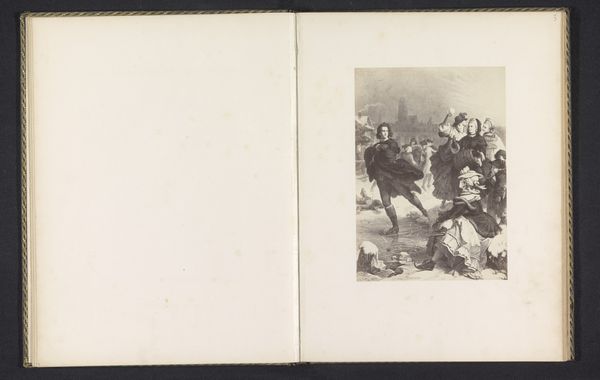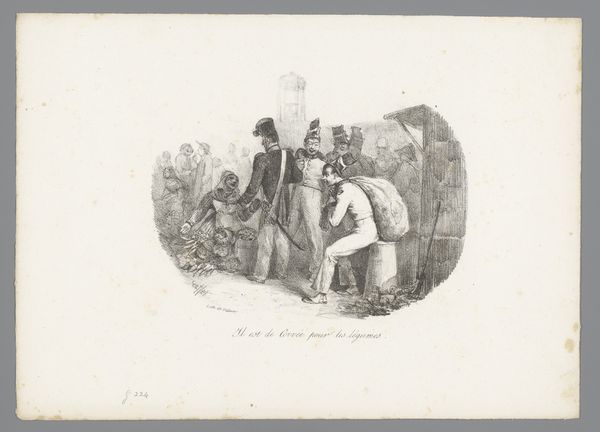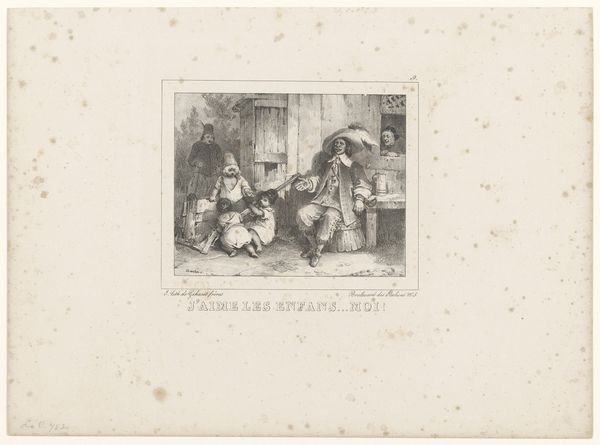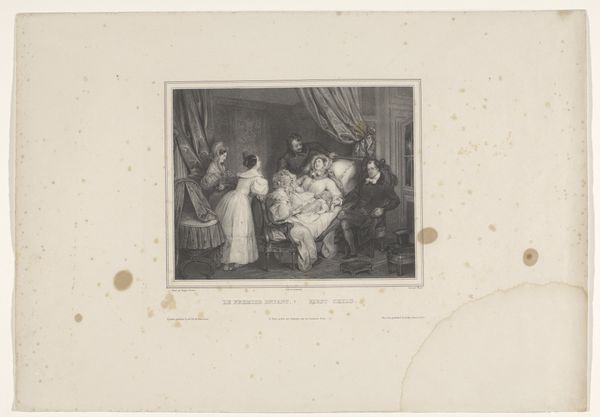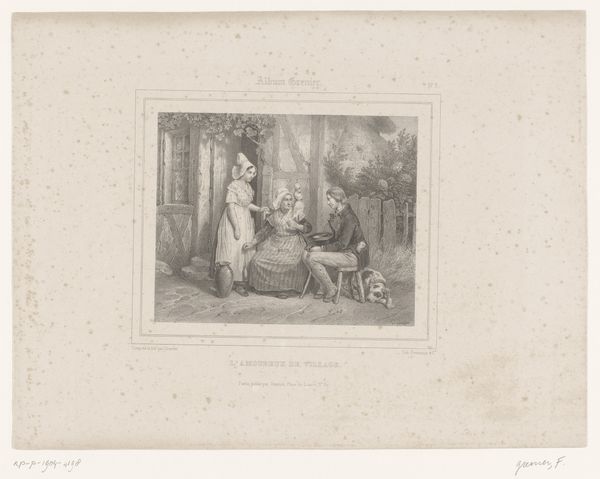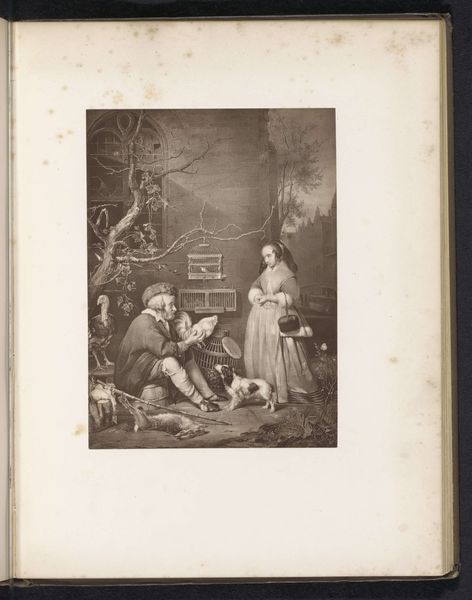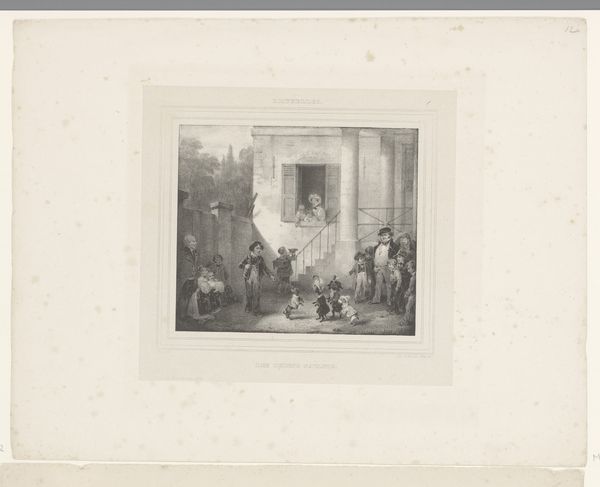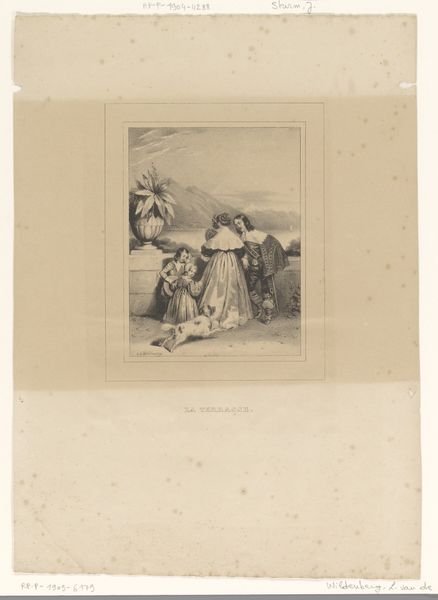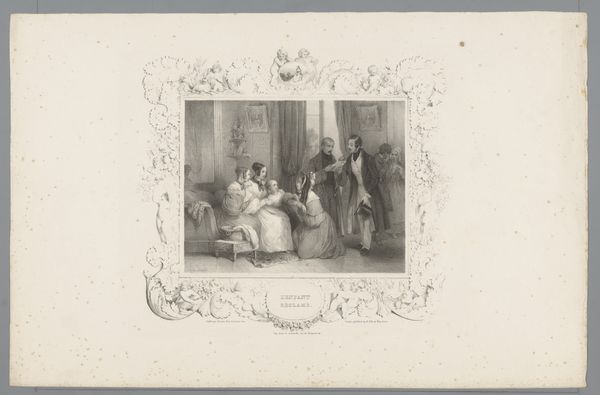
Tarquin and Lucretia and Cleopatra Honored with Gifts 1745 - 1750
0:00
0:00
drawing, print, etching, paper
#
drawing
#
baroque
# print
#
etching
#
figuration
#
paper
#
history-painting
#
italian-renaissance
#
nude
#
italy
Dimensions: 230 × 180 mm (plate, left); 235 × 183 mm (plate, right); 320 × 515 mm (sheet)
Copyright: Public Domain
Giovanni Domenico Tiepolo created these two images, "Tarquin and Lucretia and Cleopatra Honored with Gifts," using etching, a printmaking technique that democratized image production in the 18th century. Etching involves coating a metal plate with a waxy, acid-resistant substance. The artist then scratches an image into this coating, exposing the metal beneath. When the plate is immersed in acid, the exposed lines are "bitten," creating grooves. Ink is applied to the plate, filling these grooves, and the surface is wiped clean. Finally, paper is pressed against the plate, transferring the inked image. The etched lines in Tiepolo’s prints have a crisp, delicate quality, capturing the dramatic scenes with precision. The technique allowed for relatively quick reproduction, making art more accessible to a wider audience beyond the elite. The distribution of etchings, engravings, and other printed images encouraged the circulation of ideas and aesthetics. By understanding the making of Tiepolo’s work – the combination of skilled handwork, chemical process, and mechanical reproduction – we can appreciate its role in a burgeoning visual culture.
Comments
No comments
Be the first to comment and join the conversation on the ultimate creative platform.
